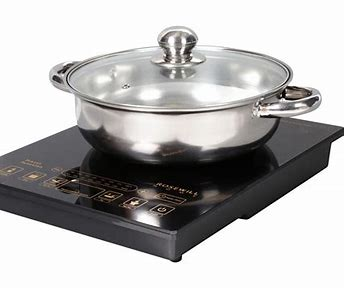Hotpoint Induction Hob: Induction hobs have revolutionized cooking, offering a smooth plan, proficient performance, and enhanced safety. One such standout item is the Hotpoint induction hob. This article will dive into the key highlights, benefits, and considerations of the Hotpoint induction hob, helping you make an educated choice for your kitchen.
Understanding Acceptance Cooking
Before we plunge into the Hotpoint induction hob, let’s briefly understand the concept of induction cooking. Unlike traditional gas or electric hobs, induction hobs utilize electromagnetic induction to warm cookware directly.
A coil underneath the glass surface produces an attractive field, which is interatomic with the ferrous metal in your cookware. This interaction causes the cookware to warm up, whereas the hob itself remains moderately cool.
Key Highlights of the Hotpoint Induction Hob
The Hotpoint induction hob gloats a few noteworthy highlights that make it a alluring choice for advanced kitchens:
Touch Control Interface: The instinctive touch control interface permits for exact temperature alterations and simple operation.
Booster Work: This includes quick warming for fast burning or boiling, saving you important time.
Timer Work: Set clocks for person cooking zones or the whole hob, guaranteeing your food is cooked to perfection.
Automatic Pan Detection: The hob consequently detects the presence and measure of cookware, altering the cooking zone accordingly.
Safety Highlights: The Hotpoint induction hob consolidates security highlights such as remaining warm pointers and programmed shut-off, giving peace of mind.
Benefits of Induction Cooking
Choosing a Hotpoint induction hob offers various benefits:
Energy Productivity: Induction cooking is exceedingly energy-efficient, as warm is exchanged directly to the cookware, minimizing vitality loss.
Fast Cooking: Induction hobs warm up rapidly and react instantly to temperature changes, resulting in quicker cooking times.
Precise Temperature Control: The exact temperature control permits for fragile cooking errands like softening chocolate or simmering sauces.
Safety: Induction hobs are generally safer than gas or electric hobs, as the hob itself remains cool, decreasing the chance of inadvertent burns.
Easy Cleaning: The smooth glass surface is simple to clean, with no grates or handles to remove.
Considerations Before Buying
When considering a Hotpoint induction hob, there are a few components to keep in mind:
Compatibility: Guarantee that your cookware is congruous with induction cooking. See for cookware made from ferrous metals like cast press, stainless steel, or enameled steel.
Installation: Proficient establishment is suggested to guarantee legitimate wiring and safety.
Cost: Induction hobs may have a higher beginning cost compared to traditional hobs, but the vitality savings and long-term benefits can offset the investment.
Additional Safety Features
Beyond the standard safety highlights said prior, Hotpoint induction hobs may too include:
Child Bolt: This anticipates accidental activation of the hob.
Overheat Security: If the hob becomes excessively hot, it will naturally close off to avoid damage.
Pan Location Mistake: If the wrong sort of cookware is set on the hob, it may not warm up, avoiding potential hazards.
Energy Productivity and Cost Savings
Induction cooking is generally more energy-efficient than conventional gas or electric hobs. This is since warm is exchanged specifically to the cookware, reducing vitality misfortune. As a result, utilizing a Hotpoint induction hob can lead to noteworthy vitality savings on your power bill.
Installation and Maintenance
While most Hotpoint acceptance hobs come with clear establishment information, it’s regularly suggested to counsel a proficient agent for appropriate establishment to guarantee security and ideal execution. Regular support, such as cleaning the hob surface and checking for any harm, can help prolong the life of your appliance.
Comparison to Other Hob Types
When considering a Hotpoint induction hob, it’s helpful to compare it to other prevalent hob types:
Gas Hobs: Gas hobs offer speedy warming and exact temperature control, but they can be less energy-efficient and may pose a security hazard if not utilized properly.
Electric Hobs: Electric hobs are generally more energy-efficient than gas hobs, but they can be slower to warm up and may have less exact temperature control.
Conclusion
The Hotpoint induction hob is a modern kitchen appliance that offers a combination of effectiveness, comfort, and security. With its natural touch controls, booster work, and security highlights, it’s an incredible choice for those seeking a high-performance cooking solution.
FAQs
What are a few interesting highlights of Hotpoint induction hobs?
Hotpoint induction hobs may offer highlights such as pre-programmed cooking settings, adaptable cooking zones, and extraordinary coatings for easier cleaning.
Where can I discover replacement parts or extras for my Hotpoint induction hob?
You can regularly discover replacement parts and extras through authorized Hotpoint dealers or online retailers.
How does an induction hob compare to a gas hob?
Induction hobs are generally more energy-efficient and safer than gas hobs, but they may have a higher starting cost.
What are the advantages of an acceptance hob over an electric hob?
Induction hobs offer quicker heating times, more exact temperature control, and are generally more energy-efficient than electric hobs.
Can I install an induction hob myself?
While it’s conceivable to install an induction hob yourself, it’s generally prescribed to counsel a proficient electrician to guarantee legitimate wiring and safety.
What sort of wiring is required for an induction hob?
Induction hobs require committed circuits with adequate amperage to handle the control requirements.
How much can I save on my vitality charge by utilizing an induction hob?
The correct savings will depend on your current vitality usage and the particular demonstration of your induction hob. However, numerous clients report noteworthy vitality savings compared to traditional gas or electric hobs.
Can I utilize induction hobs for slow cooking or simmering?
Yes, induction hobs are appropriate for moderate cooking and stewing. Numerous models offer particular settings for these cooking techniques.
What should I do if my induction hob is not warming up?
Check if the cookware is compatible with induction cooking, guarantee the hob is turned on, and confirm that the cookware is properly centered on the cooking zone.
To read more, click here
